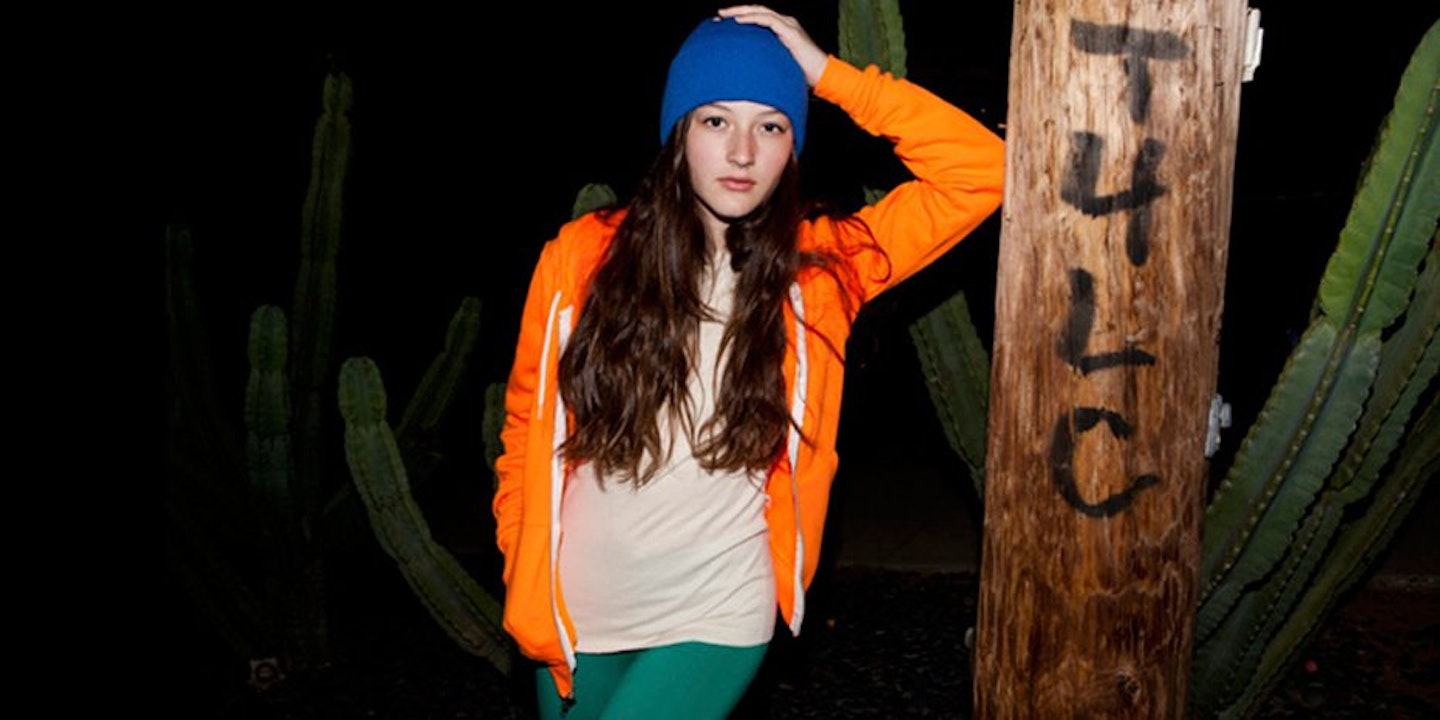Lost male models in leather caps, holey jumpers and clacking shoes clog up London’s underground about twice a year, as a way of ushering in Men’s Fashion Week. Now it’s a proper, unavoidable ‘thing’, part of the national discourse, just like shit weather and the demise of Celebrity Big Brother. In response fashion writers trot out a bi-annual story on what we can adopt from menswear into our own wardrobe. But, while most girls will enjoy their menswear for one week only I’ll go on living a menswear life. Because men’s clothes make up 90% of my wardrobe.
[ASSETHERE=image]
I first started wearing men’s clothes unwittingly. American Apparel’s unisex hoodies pulled me in. A bit of a 2008 indie scenester status symbol, there was something unifying about them. You could swap them with friends, both male and female. At charity shops I would also pick up men's stuff – largely because the women’s stuff was heavily decorated, all covered in diamanté and stitched flowers - I’d pair a simple T-shirt with some wacky logo on with pin-prick-skinny jeans, and that was my look for a good couple of years.

Buying men’s clothes brings me a joy that extends far beyond my subversion of the entire ‘boyfriend-item’ trend. Firstly, I’m treated a lot better in a men’s shop. It’s not expected for male shoppers to rummage through a few rails, mess up a pile of T-shirts, try 11 outfits on and demand the sales assistant grab them three different variations of each outfit before walking out empty-handed. So the staff are just that more affable. That, or they think I’m there to buy a specific item for some lucky bloke in my life. Either way, they treat me like I’m actually going to buy something.
Other customers regard me kindly, too. They won’t push past me, and not just because they’re gentlemen – it’s not like I’m shopping at Hugo Boss or anything – it’s because, as a woman, I’m of a higher pecking order than them in a clothes shop. In a bicycle shop I’ll be treated like an amateur amongst the spandex. And in a woman’s clothes shop, I feel a bit like Bono at Mandela’s funeral: allowed, but not really welcome. In a men’s clothes shop, I’ve got the authority of someone who’s got the balls to be discerning. Instead of idling into a shop full of what I’m supposed to wear, I’m making the confident decision to defy what’s expected of me, and my fellow shoppers respect me for that. Even if someone does give me a snide look, I put it down to me being a woman in a men’s shop, not because I’ve selected a hideous shirt that’ll make me look fat.
Oh, and about that – I don’t really know what size I am. The vagueness of menswear’s sizing means that everything from a women’s size 8-12 is a small, and it all comes up big anyway. By dressing in menswear, I’ve opted out of a totally unnecessary convention that literally restricts women.
To me, to enter a women’s clothes shop is to shuffle into an echo chamber of clattering clothes hangers and the yelps of women squeezing through sphincter-width gaps just to get their hands on the last spaghetti-strap sheer nylon top that no-one will be wearing in four months’ time. It’s an endurance test that’ll invariably see the average woman plonked outside the SpudULikein a provincial shopping centre’s food hall, rubbing her swollen ankles and facing a toddle home in the rain with only the static of over-loaded plastic bags to warm her. I don’t want to be that woman.

Shopping shouldn’t be a chore, and though I totally respect those followers of the shop-til-you-drop mantra it’s not for me. It’s not that I’m anti-fashion. Though I’ll always put comfort first, making an exception only for those first few weeks breaking in a new pair of Doc Martens, I like to look presentable.
That said, I’d never go food shopping without a list of things I want to buy, even if it’s just a mental list of three ingredients that I repeat to myself over and over again until I’m murming ‘rice, bananas, spinach’ to the self-checkout till. So when I go into a clothes shop I like to have an idea of what I’m buying beforehand. I’ll draw inspiration from people around me, adverts, video promos, art, menswear editorials, fashion Tumblrs and actual menswear websites – all before I go shopping. Time spent in the shop will be anywhere from ten minutes to half an hour. And then I come home with clothes of a really sturdy quality.
And they really are better quality. Especially the jumpers from Cos, the shirts from Carhartt and Farah Vintage, the coats from Uniqlo (seriously, really smart people think the trench I bought from there is from actual Burberry) and Urban Outfitters’ own-brand t-shirts. Perhaps it’s because retailers and designers expect men as consumers to not follow trends quite so quickly – and therefore the high-street knock-offs of men’s catwalk looks will be more robust. Designers aren’t trying to imitate a perfect ruche, or give the impression of a certain fabric that’s been reinstated. Or maybe they’re under some misguided impression that men are stronger, so more likely to rip their own clothes, hulk-like, than women. Regardless, to me, there’s a functionality to men’s clothes that you don’t get in women’s. Even if it’s just that I don’t have to spend my Saturdays crying in Topshop.
Pictures: Getty
This article originally appeared on The Debrief.
_620x349.jpg?ar=16%3A9&fit=crop&crop=top&auto=format&w=1440&q=80)